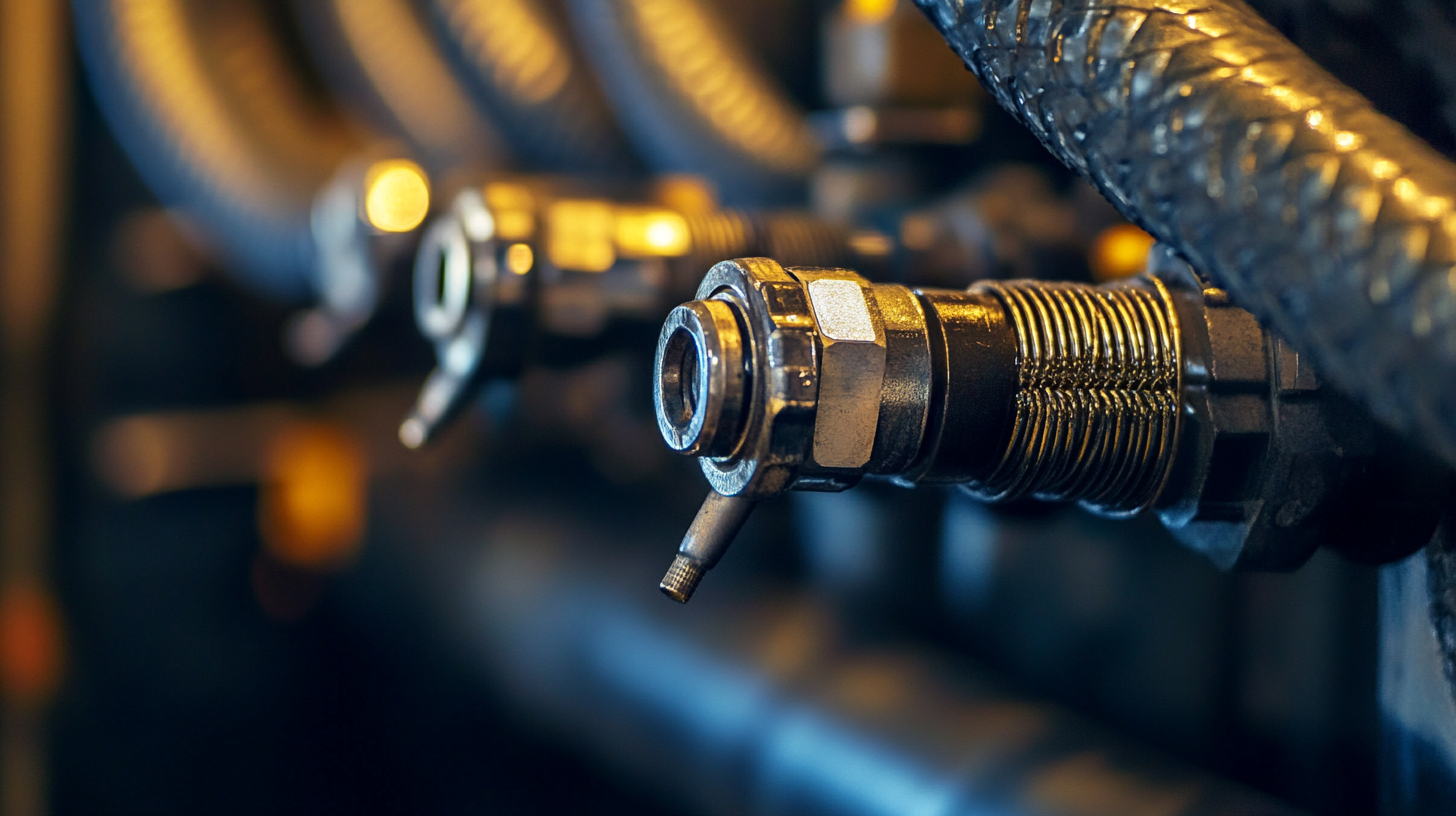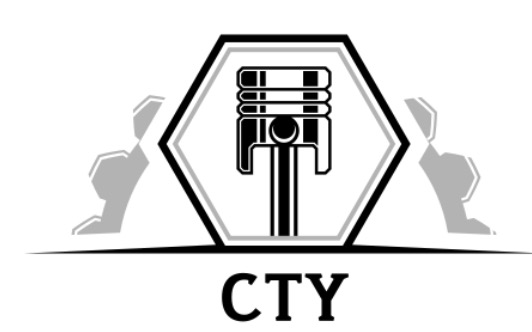- Home Page
- Company Profile
-
Our Products
- Hydraulic Pumps
- Hydraulic Solenoid Valves
- Conventional Valves
- Proportional Valves
- Safety Valves
- Mobile Control Valves
- Hydraulic Motor
- Cylinders and Servo Cylinders
- Hydraulic Filters
- Hoses and Fittings
- Gates Hydraulic Hose
- MP Filters Filters
- Dowty Gear Pumps
- Polyhydron Valves
- Manifold Blocks
- Walvoil
- Spica
- Hand Pumps
- ATOS Hydraulic Components
- Blog

Exploring the Best High Pressure Hydraulic Hose Alternatives for Diverse Industrial Applications
In the world of industrial applications, the demand for reliable and efficient High Pressure Hydraulic Hoses is more critical than ever. According to a report by MarketsandMarkets, the global hydraulic hose market is projected to grow from USD 2.2 billion in 2020 to USD 3.3 billion by 2025, reflecting an increasing reliance on hydraulic systems across various sectors. With this growth comes the necessity for manufacturers to explore alternatives that not only meet performance standards but also provide enhanced durability and flexibility. Choosing a high-quality manufacturer is essential to ensure that these hoses can withstand the rigorous demands of high-pressure environments. This blog will delve into the best alternatives available, focusing on innovative solutions that address the diverse needs of industries ranging from construction to agriculture, while emphasizing the importance of selecting the right supplier for optimal operational efficiency.

Importance of High Pressure Hydraulic Hoses in Industrial Settings
 High pressure hydraulic hoses play a crucial role in various industrial applications, serving as the backbone for fluid transport in systems that require robust performance under intense conditions. As industries evolve, the demand for these hoses grows, especially with shifts towards mechanical farming in regions like China, which is projected to significantly boost industrial hose requirements between 2025 and 2035. Recent advancements in hydraulic hose technology also support the increasing needs for fluid power systems in diverse sectors such as oil and gas and data center cooling.
High pressure hydraulic hoses play a crucial role in various industrial applications, serving as the backbone for fluid transport in systems that require robust performance under intense conditions. As industries evolve, the demand for these hoses grows, especially with shifts towards mechanical farming in regions like China, which is projected to significantly boost industrial hose requirements between 2025 and 2035. Recent advancements in hydraulic hose technology also support the increasing needs for fluid power systems in diverse sectors such as oil and gas and data center cooling.
Innovations in hose design are vital for ensuring optimal performance and safety in extreme conditions. Engineers focus on selecting materials that withstand high pressures and harsh environments, minimizing risks associated with failure or leaks. Furthermore, studies exploring dynamic behaviors and fluid-structure interactions in hydraulic hoses highlight the importance of understanding these components for performance optimization. As industries continue to demand high efficiency and safety, investing in high quality hydraulic hoses remains paramount to operational success and reliability.
Evaluating Material Options: Rubber vs. Thermoplastic for Durability
When it comes to choosing materials for high-pressure hydraulic hoses, the debate between rubber and thermoplastic elastomers (TPE) is increasingly relevant. Both materials come with distinct advantages, which can significantly impact their performance across various industrial applications. Rubber is known for its durability and resistance to extreme temperatures, making it a traditional choice for heavy-duty applications. However, the emerging popularity of thermoplastic materials cannot be overlooked, as they offer enhanced flexibility and lightweight properties, which can lead to easier handling and installation.
The thermoplastic elastomers market is projected to reach USD 35.4 billion by 2028, indicating a robust demand driven by industries seeking high-performance materials. Its appeal lies in its eco-friendliness and recyclability, which are crucial as industries increasingly prioritize sustainability. In contrast, the high-performance rubber market is also set for growth, projected to rise from USD 24.5 billion in 2024 to USD 34.2 billion by 2033. This indicates that while rubber remains a staple material, the industry is also exploring innovative solutions that combine the advantages of both material types, aiming for increased performance without compromising on environmental responsibility.
Exploring the Best High Pressure Hydraulic Hose Alternatives for Diverse Industrial Applications - Evaluating Material Options: Rubber vs. Thermoplastic for Durability
| Material Type | Max Pressure (psi) | Temperature Range (°F) | Flexibility | Durability | Applications |
|---|---|---|---|---|---|
| Rubber | 3000 | -40 to 212 | Moderate | High (Abrasion Resistant) | Manufacturing, Agriculture |
| Thermoplastic | 4000 | -40 to 190 | High | Moderate (Heat and Hydrolysis Resistant) | Construction, Robotics |
| Rubber | 5000 | -40 to 180 | Low | Very High (Chemical Resistant) | Mining, Oil & Gas |
| Thermoplastic | 4500 | -30 to 212 | Very High | Moderate | Petrochemical, Transportation |
Key Performance Metrics: Pressure Ratings and Temperature Tolerances Explained
When selecting a hydraulic hose for industrial applications, understanding key performance metrics such as pressure ratings and temperature tolerances is crucial.
 Pressure ratings indicate the maximum pressure a hydraulic hose can withstand before failure occurs. This metric is typically measured in pounds per square inch (PSI) and varies significantly among different hose materials and constructions. For instance, steel wire braided hoses offer higher pressure ratings compared to synthetic materials, making them ideal for high-demand environments like construction or manufacturing.
Pressure ratings indicate the maximum pressure a hydraulic hose can withstand before failure occurs. This metric is typically measured in pounds per square inch (PSI) and varies significantly among different hose materials and constructions. For instance, steel wire braided hoses offer higher pressure ratings compared to synthetic materials, making them ideal for high-demand environments like construction or manufacturing.
Temperature tolerance is another essential factor in determining hose performance. Hydraulic hoses must operate effectively within a specified temperature range. Exceeding these limits can lead to material degradation, reduced flexibility, and even catastrophic failure. Hoses designed for extreme temperatures—either hot or cold—often utilize specialized compounds that maintain flexibility and strength under varying conditions. By understanding these critical metrics, industries can select the most suitable hydraulic hose alternatives that not only meet their application requirements but also enhance overall system reliability and safety.
Cost-Effectiveness: Comparing Lifecycle Costs of Various Hydraulic Hose Alternatives
In the realm of industrial applications, selecting the right hydraulic hose is paramount for ensuring efficiency and safety. While high-pressure hydraulic hoses are often the go-to choice due to their durability and performance, businesses are increasingly exploring alternative options that might offer greater cost-effectiveness over time. Evaluating the lifecycle costs of these alternatives reveals a more nuanced picture; one that can significantly impact a company's bottom line.
When considering alternatives, it’s crucial to assess not only the initial purchase price but also factors such as maintenance expenses, durability, and operational efficiency. For instance, thermoplastic hoses or composite materials may initially appear more expensive, yet their extended service life and reduced maintenance needs can lead to lower total costs in the long run. Furthermore, the flexibility of these alternatives can increase system efficiency, potentially reducing energy consumption and downtime—an essential consideration in today’s competitive environment. Ultimately, understanding the full cost implications helps organizations make informed decisions that align with both their operational needs and financial goals.
Innovative Technologies: Advancements in Hose Design for Enhanced Safety and Efficiency
Innovative technologies in hose design have significantly advanced the safety and efficiency of high pressure hydraulic applications. Recent developments focus on incorporating advanced materials and manufacturing techniques that enhance resilience against wear, pressure fluctuations, and environmental challenges. These innovations ensure that hoses are not only durable but also lightweight, allowing for easier maneuverability in various industrial settings.
Tips: When selecting hoses for high pressure applications, consider the material composition, as some may offer better flexibility or resistance to specific chemicals. Regular inspections for signs of wear and tear can also prevent unexpected failures, ensuring a safer workflow.
Additionally, manufacturers are exploring smart technologies integrated into hydraulic hoses, such as sensors that monitor pressure and temperature in real-time. This not only provides immediate feedback on operational status but also aids in predictive maintenance, helping to prevent catastrophic failures before they occur.
Tips: Implementing regular training for staff on the proper use and maintenance of hydraulic hoses can maximize their lifespan. Utilizing digitally monitored hoses can also streamline maintenance schedules, making it easier to manage safety protocols efficiently.
Enhancements in High Pressure Hydraulic Hose Alternatives
Developed and Managed byInfocom Network Private Limited.

 Send Inquiry
Send Inquiry
